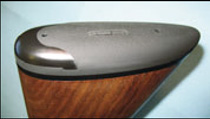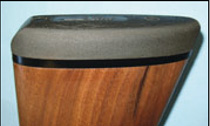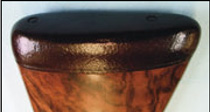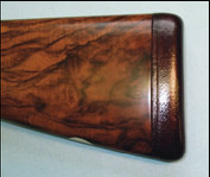
The Gazette
no butts about it! |
|
|
|
|
|
I find the lowly
recoil pad is one of the most commonly over-looked aspects of good
shooting. A good recoil pad serves three main purposes: 1) Facilitates
a smooth, drag- free gun mount. 2) Keeps the butt in place, once
mounted, and absorbs recoil. 3) Protects the wood at the butt from
damage. Recoil pads can also add an aesthetically pleasing touch
to a fine gun, as do leather-covered recoil pads. The first thing to consider when having a pad installed on your gun is your ideal length of pull -the distance from the first trigger to the center of the butt, and the proper pitch -- the angle of the butt in relation to sighting plane or top rib. These can be found by trial and error, but a more efficient and cost-effective way is to get a proper gun fit from an experienced gun fitter. Remember that the measurements will be slightly different for O/U's and SxS's. A good fitter can give you both measurements without too much trouble. Various kinds of pads facilitate a clean gun mount and absorb an acceptable amount of recoil in a variety of different ways. One of the most common designs is a hard rubber horseshoe-shaped insert at the top of the pad, rounded and polished smooth so the pad is snag-free during the mount. The main body of the pad is usually made of a soft recoil-absorbent material.
|
Another pad design is made of soft material with the heel of the pad clipped off at an angle to keep it from catching on the mount. Other pads are made of a somewhat harder rubber and are less sticky than the above-mentioned pads. These pads do well on a hunting gun where recoil is not as big a concern.
|
The pad should be very slightly proud of the wood, about .005in.
or about the thickness of two sheets of paper. This prevents the
end grain of the wood from snagging or chipping The pad should
be polished smooth with no visible grinding marks and should look
like an extension of the stock.
There can be "No butts about it"
a good recoil pad set at the proper length of pull and pitch will
make you a better shooter. |



